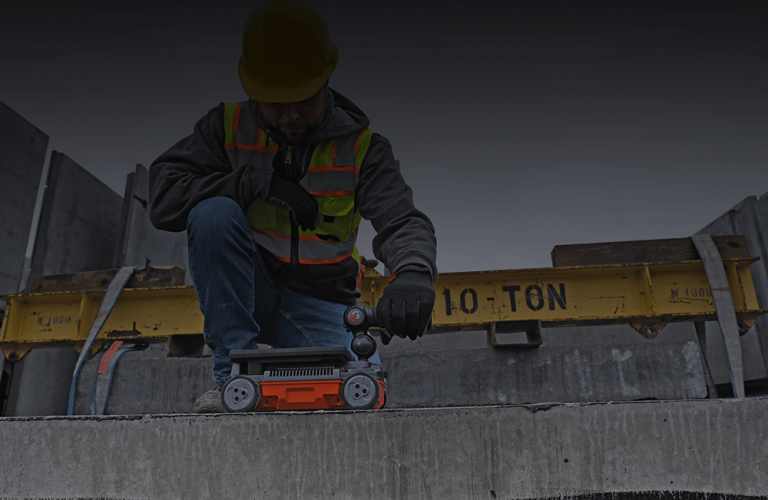Why Select RainierGPR Concrete Scanning for Accurate Subsurface Evaluation
Why Select RainierGPR Concrete Scanning for Accurate Subsurface Evaluation
Blog Article
The Significance of Precise Concrete Scanning in Finding Underground Hazards
The capacity to accurately identify and map these underground dangers is not merely a matter of ease but a critical facet of guaranteeing the safety and security of both construction workers and the honesty of the project itself. By deploying sophisticated scanning modern technologies and approaches, specialists can discover concealed dangers, prevent expensive problems, and ultimately pave the method for smoother and more secure construction undertakings.
Advanced Scanning Technologies for Discovery
Cutting-edge radar systems are transforming the area of below ground discovery by giving exceptional accuracy and effectiveness. These innovative scanning modern technologies utilize ground-penetrating radar (GPR) to create comprehensive photos of subsurface frameworks, using understandings right into what exists below the surface with exceptional clearness. By producing high-frequency pulses into the ground and measuring the reflections, radar systems can identify variations in material structure and identify below ground threats such as cords, pipes, and spaces.
Among the essential benefits of these advanced radar systems is their non-invasive nature, enabling for thorough examinations without causing damage to the existing structures. This not only ensures the safety of the surrounding setting however likewise minimizes the demand for costly repairs or disruptions to recurring building projects. Additionally, the real-time information supplied by these scanning innovations enables quick decision-making and enhances general project performance.
Value of Subsurface Mapping

Exact subsurface mapping assists in stopping expensive damages to existing underground framework, minimizing the threat of accidents, and maintaining task timelines. It makes it possible for job managers to make informed choices pertaining to website planning, devices implementation, and resource appropriation. In addition, subsurface mapping enables for better coordination amongst different teams servicing a job and helps in abiding with governing demands associated with below ground utility discovery.
Mitigating Dangers in Construction Tasks
Effective threat reduction techniques are necessary for ensuring the success and safety of building jobs. One vital aspect of mitigating risks in building jobs is detailed planning and assessment at the initial stages.
Additionally, developing clear communication her response networks among all task stakeholders and guaranteeing rigorous adherence to security methods are important elements of risk mitigation. By proactively implementing robust threat mitigation strategies, building and construction jobs can minimize hold-ups, cost overruns, and safety occurrences, eventually leading to effective job outcomes.

Preventing Expensive Damages and Delays
To decrease economic losses and job setbacks, reliable methods should be implemented to protect against costly problems and hold-ups in construction tasks. Determining these obstructions early on aids in preparing the task design more successfully and preventing possible problems throughout excavation.
Additionally, spending in training programs for building employees on the significance of concrete scanning and secure excavation methods can considerably lower the risk of crashes and delays. Clear communication networks in between job supervisors, engineers, basics and on-site employees are also necessary to guarantee that every person is aware of the possible hazards and complies with the essential methods to avoid expensive damages. By prioritizing positive steps like concrete scanning and advertising a culture of security and recognition, construction jobs can lessen the monetary impact of unanticipated underground obstructions and prevent expensive hold-ups.
Ensuring Safety of On-Site Personnel
By prioritizing positive actions such as comprehensive training programs and clear communication networks, construction jobs can make sure the safety and security of on-site employees amid the potential risks found via concrete scanning. Correct training equips workers with the knowledge and skills needed to browse building and construction websites securely, especially when hazards are identified through scanning processes. Training should cover hazard acknowledgment, emergency situation treatments, and the appropriate use of individual safety devices to alleviate dangers successfully.
Furthermore, establishing clear communication channels is crucial for disseminating details concerning recognized threats promptly. This ensures that all on-site employees recognize prospective risks and can take required precautions to avoid crashes. Routine security briefings, tool kit talks, and constant updates concerning scanning results help keep every person notified and positive in maintaining a secure workplace.
Furthermore, applying stringent adherence to security protocols and laws, performing regular safety and security audits, and cultivating a culture of safety awareness among employees are vital parts in guaranteeing the well-being of on-site workers during building and construction jobs - RainierGPR pop over here Concrete Scanning. Aggressive precaution not just safeguard employees from harm yet likewise add to the general success and performance of the job
Conclusion
Utilizing advanced scanning technologies and subsurface mapping assists alleviate threats in building and construction tasks, preventing costly damages and delays. It is crucial for building and construction firms to prioritize the use of precise scanning methods to minimize potential risks and guarantee a smooth building process.
By proactively applying durable danger mitigation methods, building projects can decrease hold-ups, expense overruns, and safety cases, inevitably leading to successful project end results. - RainierGPR Concrete Scanning
To lessen financial losses and task obstacles, efficient strategies must be implemented to protect against expensive damages and hold-ups in building tasks. By focusing on proactive actions like concrete scanning and promoting a society of security and awareness, building and construction projects can decrease the monetary effect of unanticipated underground blockages and prevent pricey delays.
By focusing on proactive actions such as extensive training programs and clear interaction channels, building and construction jobs can make certain the safety of on-site employees amid the possible hazards identified through concrete scanning. Making use of advanced scanning innovations and subsurface mapping aids reduce threats in construction jobs, protecting against costly problems and hold-ups.
Report this page